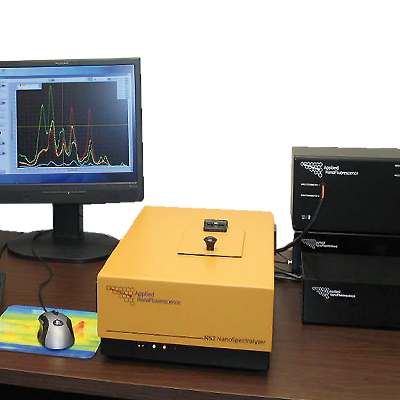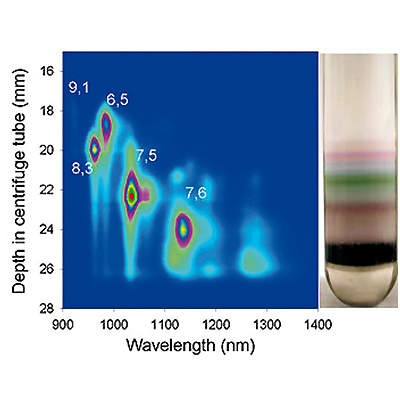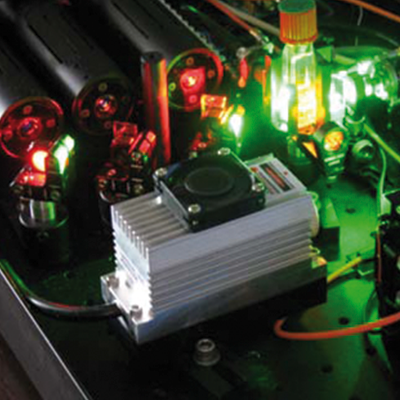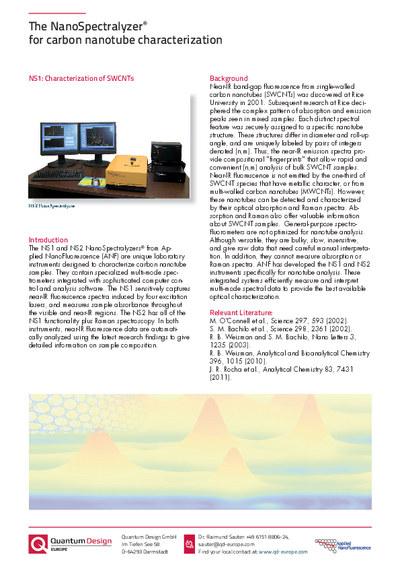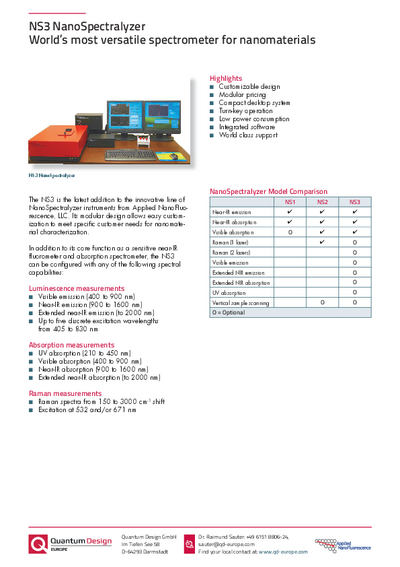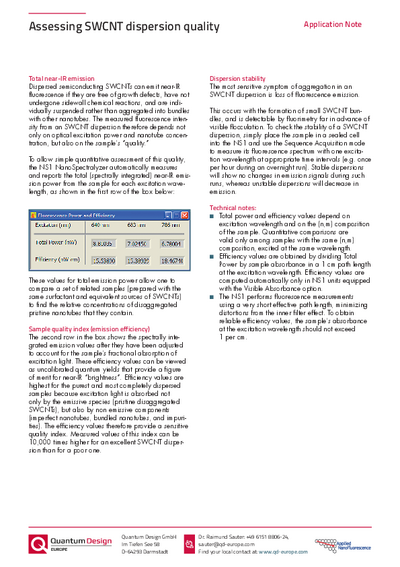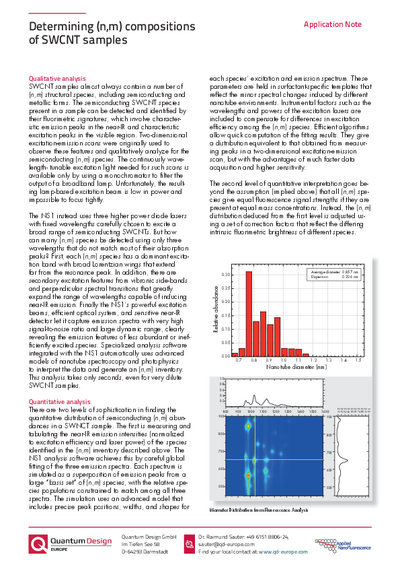Carbon nanotube characterization
NanoSpectralyzer from Applied NanoFluorescenceThe near-infrared emission spectra of nanotube samples serve as compositional "fingerprints". Spectrofluorimetry can therefore be used to deduce detailed information about the compositions of bulk samples, which invariably contain mixtures of (n,m) species.
Applied Nanofluorescence (ANF) has developed a specialized fluorimetric instrument designed specifically for single-wall carbon nanotubes (SWCNT) analysis. The unique fluorimetric analyzer combines a compact, efficient optical system and sophisticated software that acquires and interprets the data. It allows users to easily and rapidly find the identities and amounts of specific (n,m) semiconducting nanotubes in their bulk samples.
- Characterisation of SWCNT and MWCNT
- Fluorescence detection of SWCNT
- Optical absorption and Raman spectroscopy of SWCNT and MWCNT
Further information
Near-IR fluorescence is not emitted by the one-third of SWCNT species that have metallic character, or from multi-walled carbon nanotubes (MWCNTs). However, these nanotubes can be detected and characterized by their optical absorption and Raman spectra. Absorption and Raman also offer valuable information about SWCNT samples. General-purpose spectrofluorometers are not optimized for nanotube analysis. Although versatile, they are bulky, slow, insensitive, and give raw data that need careful manual interpretation. In addition, they cannot measure absorption or Raman spectra. ANF has developed the NS1 and NS2 instruments specifically for nanotube analysis. These integrated systems efficiently measure and interpret multi-mode spectral data to provide the best available optical characterization.
Near-infrared band-gap fluorescence from individual semiconducting SWCNT was discovered at Rice University in 2001. Subsequent research at Rice deciphered the complex pattern of absorption and emission peaks seen in mixed samples. As a result, each distinct spectroscopic feature has now been assigned to a specific nanotube structure. These structural species differ in diameter and chiral angle, and are uniquely labeled by pairs of integers denoted (n,m).
Applications
Downloads
Contact

Navigation
Categories
Contact
Quantum Design Turkiye
Sakarya Mah. Bassehir Sk. 14/A
06230 Altindag / Ankara
Turkey
| Phone: | +90 532 3205241 |
| E-mail: | turkeyqd-europe.com |

